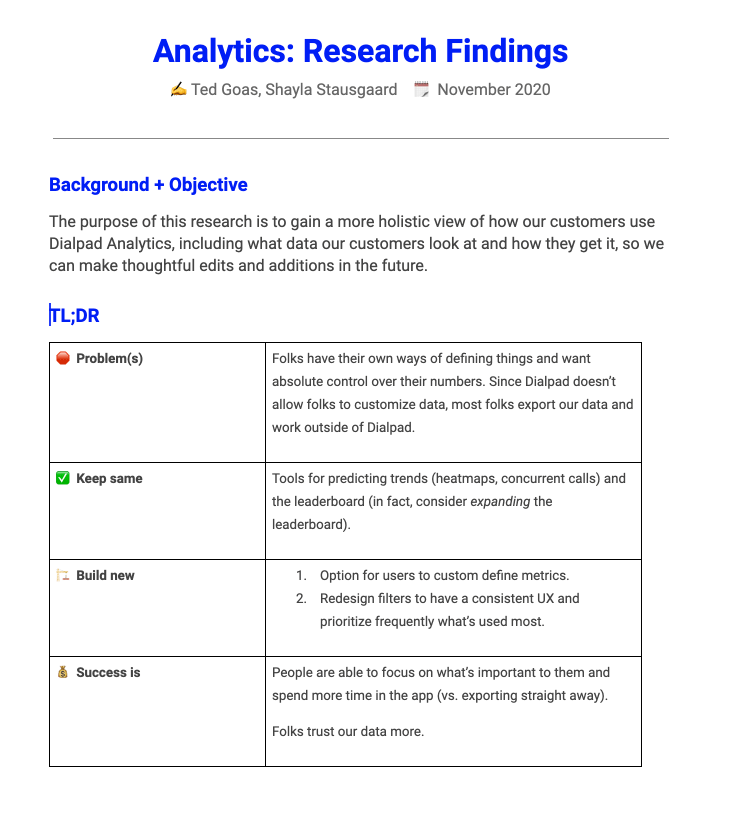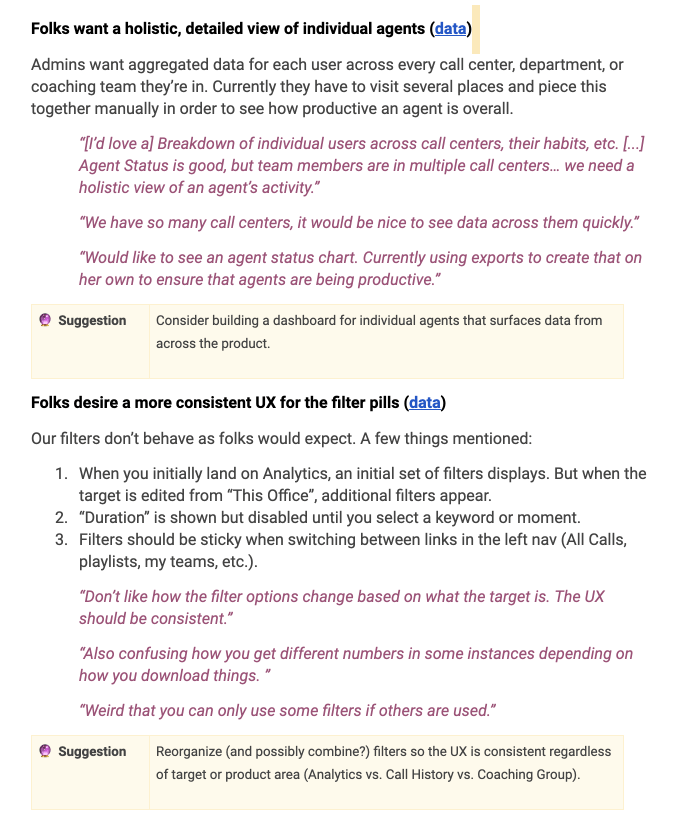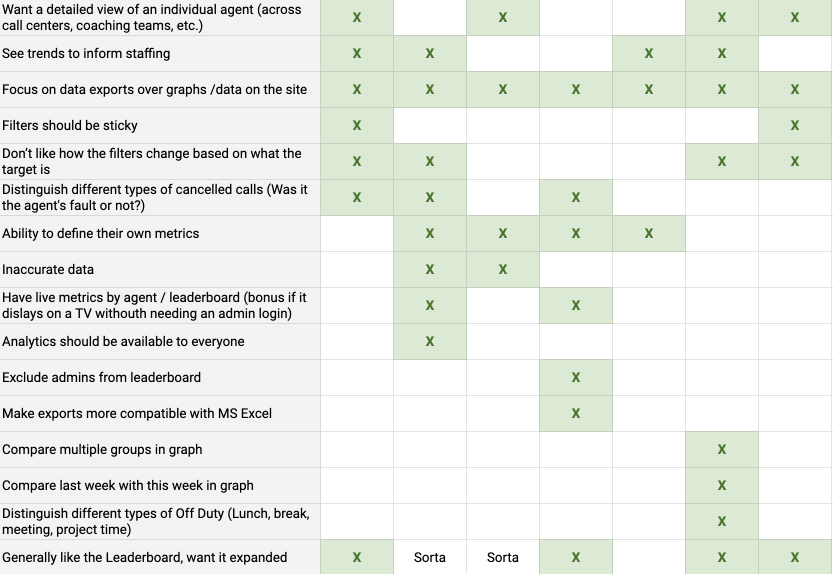Dialpad
I joined Dialpad in 2020 as a product designer on their Contact Center and Analytics products. I’ve also made significant contributions to our design system, our AI product, and various email projects.
Leadership
I joined Dialpad because it offered a larger area of impact than I had before. At the time, Dialpad’s remote and design cultures were somewhat nascent. I love the leadership part of being a designer and Dialpad offered it in droves. At Dialpad I regularly…
- Lead meetings, demos, and team-building exercises.
- Improve processes on the design team and my product teams.
- Mentor and coach other designers (and sometimes engineers).
- Help define and enforce design’s quality bar.
- Introduced user research to the company.
- Pitch ideas for the product roadmap.
- Work across teams and get the right people talking with each other.
- Help shape our interview and hiring processes.
- Contribute to and evangelize our design system throughout the company.
I spend a lot of time on glue work: understanding the problem domain, understanding the people, introducing standards, making designs better, and contributing more than just pixels.

But that’s not all I do. I’m the lead designer on two product teams. Here are a few projects I led:
Contact Center
When I joined Dialpad, it had just made a bet in the contact center space. The pre-IPO company was lagging behind some of its larger, publicly traded competitors and had a few gaps to fill in the Contact Center as a Service (CCaaS) space.
I'm currently leading the design on two large projects that will ship in the summer of 2020.
Analytics
Before I joined Dialpad, the Analytics team had never had a dedicated designer. As a result there were several table-stakes features the competition offered that Dialpad didn’t because the team didn’t have enough people to build them. So initially I helped the team play catch-up, which usually meant designing a new data filter or visualization.


Dialdpad’s Analytics tool serves all of Dialpad’s product verticals, but Contact Center is the largest customer. Contact centers are one of the only departments that doesn’t generate revenue in a company, so they need to be run efficiently to keep costs down.
One of analytics’ main jobs is to help contact centers manage their workforce and staff accordingly: ensuring there are enough agents available during busy times while minimizing the number of agents being paid during quiet times.

Our analytics product helps supervisors make decisions by visualizing when people call and why.
After working on a few projects like this, I learned a hard lesson:
Never commit to a data visualization before seeing your data in it.
There were a few times I designed and tested one chart type for a particular metric, but made a late decision to change it after populating it with real data. We use Google Charts for most of our graphs, so making changes like this are generally quick and non-destabilizing. I’m currently exploring better ways to design these graphs, as Figma only helps with the “happy path”.
Research
Shortly after joining the team, I poked around the product and asked how the team adds and manages features. I got a strong “this is how it’s always been done” vibe, which made me wonder how often we speak to actual customers about how our product fits into their lives. Turns out we really didn’t, so I began a crusade to change that.
I wanted to know how our customers actually used our product. I initiated a generative research project focused on our analytics product, created the research script, worked with our customer success team to recruit participants, ran each session, coded the results, presented the findings to the entire product org, and pitched a few projects for the roadmap (two of which got prioritized).



Most importantly this project changed the way Dialpad thinks about research. Generative research started to become commonplace at the company and I coerced an ex-coworker to join as Dialpad’s first UX Researcher. In my first year at the company I saw our research maturity increase tenfold.
One last that came out of the aforementioned research: we learned our Analytics product needed to evolve significantly to meet both our customers’ needs and our own, and the data pointed towards a (gasp) redesign. More on that later this year.
